Three New Species of Phytotelm-Breeding Melanophryniscus from the Atlantic Rainforest of Southern Brazil (Anura: Bufonidae)
- PMID: 26630281
- PMCID: PMC4667932
- DOI: 10.1371/journal.pone.0142791
Three New Species of Phytotelm-Breeding Melanophryniscus from the Atlantic Rainforest of Southern Brazil (Anura: Bufonidae)
Abstract
Three new species of Melanophryniscus are described from the Serra do Mar mountain range of the state of Santa Catarina, southern Brazil. All species are found at intermediate to high altitudes and share phytotelm-breeding as their reproductive strategy. The new species are distinguished from other phytotelm-breeding Melanophryniscus based on different combinations of the following traits: snout-vent length, presence of white and/or yellow spots on forearms, mouth, belly and cloaca, pattern and arrangement of warts, and presence and number of corneous spines. The discovery of these species in a rather restricted geographical area suggests that the diversity of phytotelm-breeding species of Melanophryniscus might be severely underestimated. The conservation status of these species is of particular concern, given that one of them is at risk of extinction not only due to its restricted habitat, but also because of anthropogenic disturbances.
Conflict of interest statement
Figures
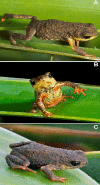




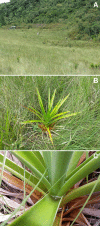
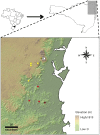
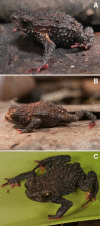


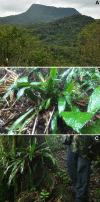
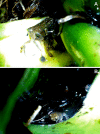




References
-
- Frost DR [Internet]. Amphibian species of the world: An online reference. Version 6.0 c2014 [cited 2015 Feb 3]. Available: http://research.amnh.org/herpetology/amphibia/index.html.
-
- Frost DR, Grant T, Faivovich J, Bain RH, Haas A, Haddad CFB, et al. The amphibian tree of life. Bull Am Mus Nat Hist. 2006; 297:1–370.
-
- Daly JW, Wilham JM, Spande TF, Garraffo HM, Gil RR, Silva GL, et al. Alkaloids in bufonid toads (Melanophryniscus): temporal and geographic determinants for two Argentinian species. J Chem Ecol. 2007; 33:871–887. - PubMed
Publication types
MeSH terms
LinkOut - more resources
Full Text Sources
Other Literature Sources

